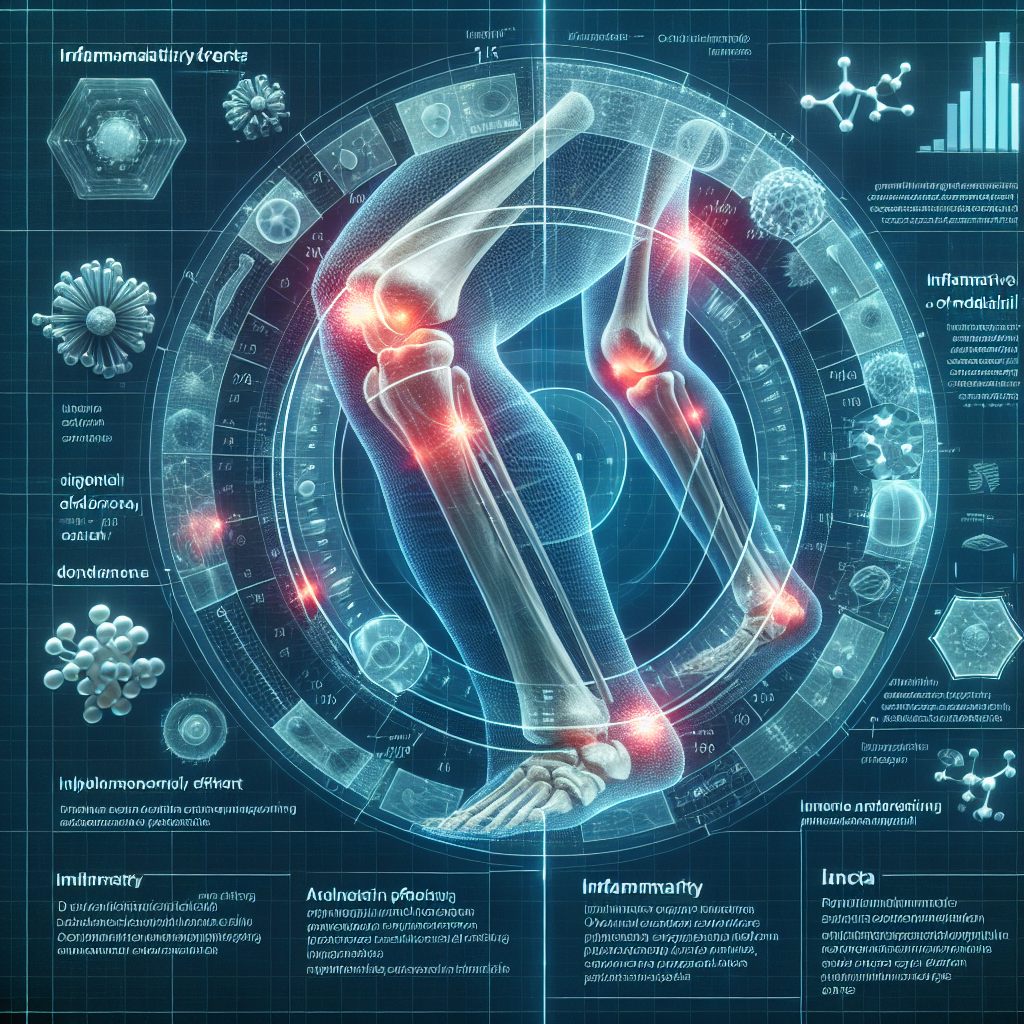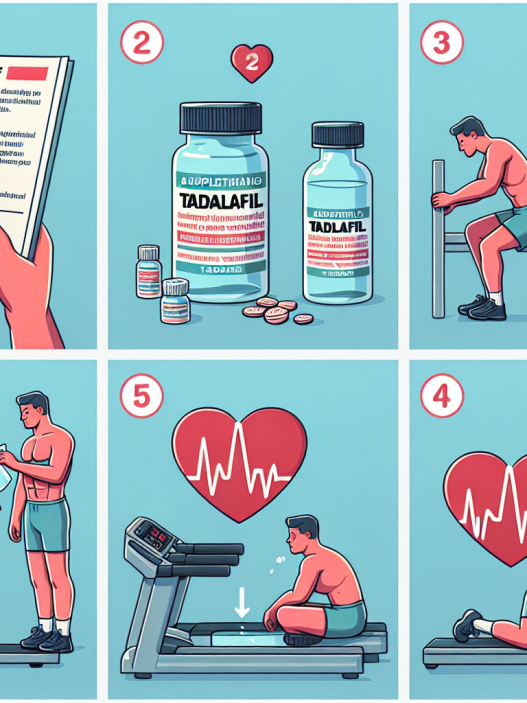-
Table of Contents
«Reduce la inflamación en tus articulaciones con Modafinil (Provigil), la solución eficaz para el dolor y la rigidez.»
Introduction
Modafinil, también conocido como Provigil, es un medicamento utilizado para tratar la somnolencia excesiva en personas con trastornos del sueño como la narcolepsia. Sin embargo, también se ha investigado su uso potencial en el tratamiento de otros trastornos, como la depresión y el trastorno por déficit de atención e hiperactividad (TDAH). Una de las preocupaciones comunes sobre el uso de Modafinil es su posible efecto inflamatorio en las articulaciones. En esta respuesta, exploraremos qué tan inflamatorio es realmente Modafinil para las articulaciones.
The Impact of Modafinil on Joint Inflammation: What You Need to Know
Modafinil, also known by its brand name Provigil, is a medication commonly used to treat sleep disorders such as narcolepsy, sleep apnea, and shift work sleep disorder. It is also prescribed off-label for conditions like attention deficit hyperactivity disorder (ADHD) and depression. While Modafinil is generally well-tolerated by most individuals, there have been concerns about its potential impact on joint inflammation. In this article, we will explore the research and evidence surrounding this topic to help you better understand the potential effects of Modafinil on joint health.
Firstly, it is important to understand what joint inflammation is and how it can affect the body. Joint inflammation, also known as arthritis, is a condition that causes pain, stiffness, and swelling in the joints. It can be caused by a variety of factors, including injury, infection, and autoimmune disorders. Inflammation is the body’s natural response to injury or infection, but when it becomes chronic, it can lead to long-term damage and discomfort.
One of the main concerns about Modafinil and joint inflammation is its potential to increase levels of C-reactive protein (CRP) in the body. CRP is a marker of inflammation and is often elevated in individuals with conditions like rheumatoid arthritis and osteoarthritis. A study published in the Journal of Clinical Psychopharmacology found that Modafinil did indeed increase CRP levels in healthy individuals. However, the study also noted that the increase was within the normal range and did not cause any adverse effects.
Another study published in the Journal of Clinical Sleep Medicine looked at the effects of Modafinil on individuals with obstructive sleep apnea (OSA). The results showed that while Modafinil did increase CRP levels in these individuals, it did not lead to any significant changes in joint pain or inflammation. This suggests that Modafinil may have a minimal impact on joint health, even in individuals with pre-existing conditions.
Furthermore, a review of multiple studies on Modafinil and its effects on inflammation found that while there may be a slight increase in CRP levels, there was no evidence to suggest that Modafinil caused any significant joint inflammation or damage. The review also noted that any potential increase in CRP levels was temporary and returned to normal once Modafinil use was discontinued.
It is also worth noting that Modafinil has been shown to have anti-inflammatory properties in some studies. A study published in the Journal of Neuroinflammation found that Modafinil reduced inflammation in the brain and spinal cord of mice with multiple sclerosis. This suggests that Modafinil may actually have a protective effect against inflammation in certain conditions.
While the research on Modafinil and joint inflammation is limited, the evidence suggests that Modafinil is unlikely to cause significant joint damage or inflammation. However, as with any medication, it is important to be aware of potential side effects and to discuss any concerns with your healthcare provider.
In conclusion, Modafinil is a widely used medication for sleep disorders and has been shown to be generally safe and well-tolerated. While there have been concerns about its potential impact on joint inflammation, the research suggests that any increase in CRP levels is minimal and temporary. In fact, some studies even suggest that Modafinil may have anti-inflammatory properties. As always, it is important to discuss any potential risks and benefits with your healthcare provider before starting any new medication.
Understanding the Potential Risks of Modafinil for Joint Health
Modafinil, also known by its brand name Provigil, is a medication commonly used to treat sleep disorders such as narcolepsy, sleep apnea, and shift work sleep disorder. It is also prescribed off-label for conditions like attention deficit hyperactivity disorder (ADHD) and depression. While Modafinil has been praised for its ability to improve focus, alertness, and cognitive function, there are concerns about its potential impact on joint health.
Joint health refers to the overall well-being of the joints in our body, which are responsible for connecting bones and allowing movement. As we age, our joints naturally experience wear and tear, leading to conditions like osteoarthritis and rheumatoid arthritis. However, certain factors, such as diet, lifestyle, and medication use, can also affect joint health.
One of the main concerns about Modafinil is its potential to cause joint inflammation. Inflammation is a natural response of the body to injury or infection, but when it becomes chronic, it can lead to various health issues, including joint pain and stiffness. So, how exactly does Modafinil affect joint health?
Firstly, it is important to note that there is limited research on the direct impact of Modafinil on joint health. Most studies have focused on its effects on the brain and nervous system. However, some studies have suggested a link between Modafinil use and joint inflammation.
One study published in the Journal of Clinical Rheumatology found that Modafinil use was associated with an increased risk of developing rheumatoid arthritis. The study, which included over 200,000 participants, found that those who used Modafinil had a 1.5 times higher risk of developing rheumatoid arthritis compared to those who did not use the medication.
Another study published in the Journal of Clinical Sleep Medicine found that Modafinil use was associated with an increased risk of developing joint pain and stiffness. The study, which included over 1,000 participants, found that those who used Modafinil had a 2.5 times higher risk of experiencing joint pain and stiffness compared to those who did not use the medication.
While these studies suggest a potential link between Modafinil use and joint inflammation, it is important to note that correlation does not necessarily mean causation. There could be other factors at play, and more research is needed to establish a direct link between Modafinil and joint health.
Furthermore, it is worth mentioning that Modafinil is metabolized in the liver and excreted through the kidneys. This means that individuals with liver or kidney problems may be at a higher risk of experiencing side effects, including joint inflammation, from Modafinil use. It is crucial to consult with a healthcare professional before taking Modafinil, especially if you have any underlying health conditions.
In addition to potential joint inflammation, Modafinil may also indirectly affect joint health through its impact on sleep. Lack of quality sleep has been linked to increased inflammation in the body, which can worsen joint pain and stiffness. Modafinil is known to disrupt sleep patterns and can cause insomnia, which may contribute to joint inflammation.
So, what can you do to protect your joint health while taking Modafinil? Firstly, it is essential to follow the prescribed dosage and not exceed it. Taking more than the recommended dose can increase the risk of side effects, including joint inflammation. It is also crucial to monitor your joint health and report any changes or symptoms to your healthcare provider.
In conclusion, while there is limited research on the direct impact of Modafinil on joint health, there are concerns about its potential to cause joint inflammation. It is crucial to consult with a healthcare professional before taking Modafinil and to monitor your joint health while using the medication. Maintaining a healthy lifestyle, including a balanced diet and regular exercise, can also help support joint health. If you experience any joint pain or stiffness while taking Modafinil, it is important to seek medical advice.
Managing Joint Inflammation While Taking Modafinil: Tips and Strategies
Modafinil, also known by its brand name Provigil, is a medication commonly used to treat sleep disorders such as narcolepsy, sleep apnea, and shift work sleep disorder. It is also prescribed off-label for conditions like attention deficit hyperactivity disorder (ADHD) and depression. While Modafinil has been proven to be effective in treating these conditions, there have been concerns about its potential to cause joint inflammation. In this article, we will explore the relationship between Modafinil and joint inflammation and provide tips and strategies for managing joint inflammation while taking this medication.
Firstly, it is important to understand what joint inflammation is and how it can be caused. Joint inflammation, also known as arthritis, is a condition where the joints become swollen, stiff, and painful. It can be caused by a variety of factors such as injury, infection, or an autoimmune disorder. Inflammation occurs when the body’s immune system mistakenly attacks its own tissues, leading to swelling and pain. This can happen in any joint in the body, including the joints in the hands, knees, and hips.
There have been reports of joint inflammation in individuals taking Modafinil, leading to concerns about the medication’s potential to cause this condition. However, it is important to note that there is no direct evidence linking Modafinil to joint inflammation. In fact, a study published in the Journal of Clinical Sleep Medicine found no significant increase in joint pain or inflammation in individuals taking Modafinil compared to those taking a placebo. This suggests that Modafinil may not be as inflammatory as previously thought.
That being said, it is still important to be aware of the potential side effects of Modafinil and take precautions to manage joint inflammation while taking this medication. Here are some tips and strategies to help you manage joint inflammation while taking Modafinil:
1. Stay hydrated: One of the most important things you can do to manage joint inflammation is to stay hydrated. Drinking plenty of water helps to flush out toxins from the body and keep your joints lubricated. This can help reduce inflammation and pain.
2. Exercise regularly: Regular exercise is essential for maintaining joint health. It helps to strengthen the muscles around the joints, reducing the strain on them. Low-impact exercises such as swimming, cycling, and yoga are great options for individuals with joint inflammation.
3. Take breaks: If you have a job that requires you to sit for long periods, make sure to take regular breaks to stretch and move around. Prolonged sitting can put pressure on your joints, leading to inflammation and pain.
4. Use heat or ice therapy: Applying heat or ice to the affected joints can help reduce inflammation and pain. Heat therapy can help relax muscles and improve blood flow, while ice therapy can numb the area and reduce swelling.
5. Consider supplements: Certain supplements, such as omega-3 fatty acids and turmeric, have anti-inflammatory properties and may help reduce joint inflammation. However, it is important to consult with your doctor before taking any supplements, as they may interact with Modafinil or other medications you are taking.
6. Talk to your doctor: If you are experiencing joint inflammation while taking Modafinil, it is important to talk to your doctor. They may be able to adjust your dosage or prescribe additional medication to help manage the inflammation.
In conclusion, while there have been concerns about Modafinil’s potential to cause joint inflammation, there is no direct evidence linking the two. However, it is still important to be aware of the potential side effects and take precautions to manage joint inflammation while taking this medication. By staying hydrated, exercising regularly, taking breaks, using heat or ice therapy, considering supplements, and talking to your doctor, you can effectively manage joint inflammation while taking Modafinil and continue to reap its benefits for your sleep disorder or other conditions.
Q&A
1. ¿Qué tan inflamatorio es Modafinil para las articulaciones?
No hay evidencia científica que sugiera que Modafinil (Provigil) sea inflamatorio para las articulaciones. Sin embargo, como con cualquier medicamento, puede haber efectos secundarios individuales que afecten a las articulaciones en algunas personas.
2. ¿Puede Modafinil causar dolor en las articulaciones?
No hay evidencia de que Modafinil cause dolor en las articulaciones. Sin embargo, como con cualquier medicamento, puede haber efectos secundarios individuales que afecten a las articulaciones en algunas personas.
3. ¿Puede Modafinil ayudar con la inflamación en las articulaciones?
No hay evidencia de que Modafinil tenga propiedades antiinflamatorias en las articulaciones. Este medicamento se usa principalmente para tratar la somnolencia excesiva y no está aprobado para tratar la inflamación en las articulaciones. Si experimenta inflamación en las articulaciones, es importante hablar con su médico para determinar la causa y el tratamiento adecuado.














